![]() Keep On Keepin’ On intimately catches lightning in a bottle, for what is usually only talked about but rarely seen on film: how a dedicated mentor can patiently pass on a lifetime of insights to sensitively guide and encourage a protégé, and how the teacher benefits from the student, like drinking from the fountain of life.
Keep On Keepin’ On intimately catches lightning in a bottle, for what is usually only talked about but rarely seen on film: how a dedicated mentor can patiently pass on a lifetime of insights to sensitively guide and encourage a protégé, and how the teacher benefits from the student, like drinking from the fountain of life.
A fond and informative American Masters-type biodoc of jazz trumpet legend Clark Terry would have been the usual easy-listening way out. A marvelous raconteur, the lively nonagenarian is full of stories and memories of notable musical experiences. That kind of documentary was the original intention of director Alan Hicks, his admiring fan, former student, and grateful drummer. Hicks was also inspired by Terry’s strong partnership with his wife, Gwen, who co-wrote Terry’s autobiography.
Terry’s singularly successful musical life story is interwoven throughout, featuring archival clips of him playing in Count Basie’s and Duke Ellington’s bands; touring with the ensemble formed by his first student, Quincy Jones; and as the first African-American staff musician on network TV, on The Tonight Show. Yet it is as a gifted teacher that Terry’s greatest influence may be felt for years to come, based on the testimonies of Jones and Miles Davis, Herbie Hancock, Esperanza Spalding, Dianne Reeves, and Roy Hargrove, whose post-premiere performance was one of the Tribeca Film Festival’s hottest tickets. This year’s audience award-winning documentary at the festival powerfully demonstrates that jazz is an art form that can be passed on from one generation to the next.
Sessions with Terry gloriously turn into a lot more than a one-way lesson. Hicks facilitated the teacher-student match at the center of the film and then dedicated four years to capturing the depth of the resulting magic. When Hicks was Terry’s student at William Paterson University, in New Jersey, he saw Terry lose heart as he was losing his sight, one of the escalating ravages of diabetes. Hicks suggested that a shy new piano student, Justin Kauflin, who had lost his vision as a child, could be of help. Determined to be independent of his family, Kauflin was trying to establish his career in Manhattan and develop a unique sound, but he was hampered by insecurities and panic attacks.
“In the wee small hours of the morning/While the whole wide world is fast asleep,” as the song goes, Kauflin intensely rehearses with the insomniac Terry down home in Pine Buff, Arkansas, in a house stuffed with five decades of rare audio and performance recordings and memorabilia. (It looks like there should be plans to turn this into a museum, like the Louis Armstrong House.) A lifetime of rhythms and subtle shadings are communicated as they revel in the joy of producing music that hits the sweet spot. Their almost telepathic interactions are captured in close-ups by cameraman Adam Hart, after the director roused him from sleeping on Terry’s living room couch. Over the years, the filmmakers kept raising the money to fly in every few months from their native Australia.
We also see what a student can give to a teacher. Kauflin channels to Terry tremendous reassurance to overcome his body’s failings as he struggles with daunting health problems. Terry continues the revivifying instruction at his hospital bed and even from inside a hyperbaric chamber. The strong desire to share more bars of music together drives him to, well, keep on keepin’ on.
It seems like almost too much of a reality TV set-up to have Kauflin audition for the cornered Quincy Jones when both Kauflin and Jones are invited to celebrate Terry’s 92nd birthday. But the warm affection and debt Jones owes his teacher, who he has known since he was 12 years old, are palpable. Not only did Jones eventually came aboard as a producer of the film but the rest may be jazz history, what with him bringing Kauflin along to join his band at the Montreux Jazz Festival in Switzerland, on tour in Asia, as well as now producing his debut album. It’s certainly a part of film history that this extraordinary relationship now enthralls viewers.


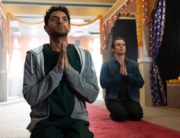


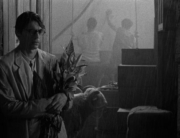

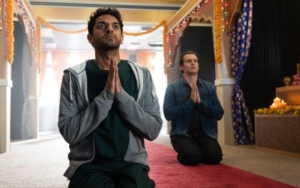
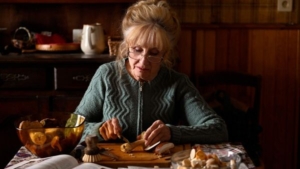







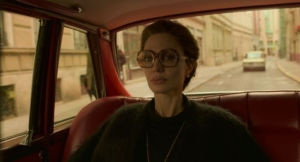
Leave A Comment